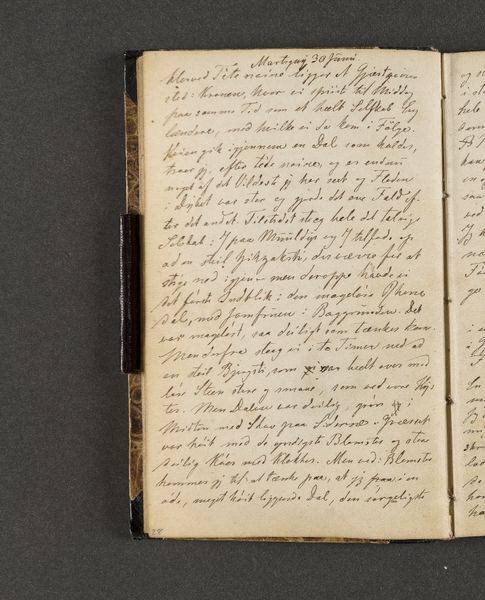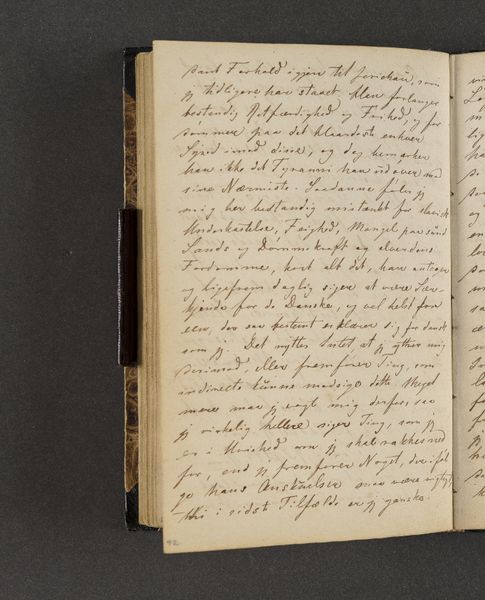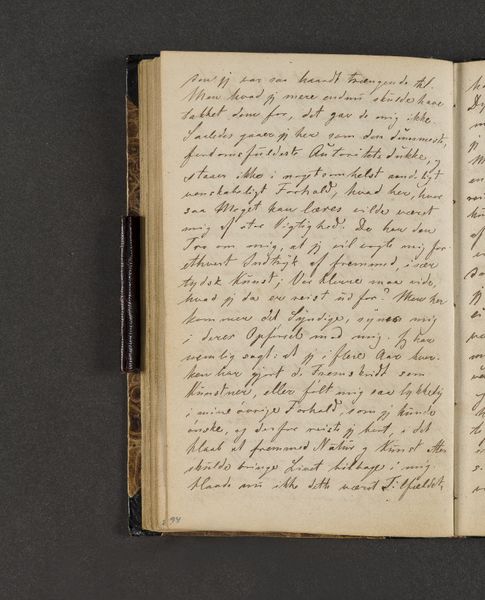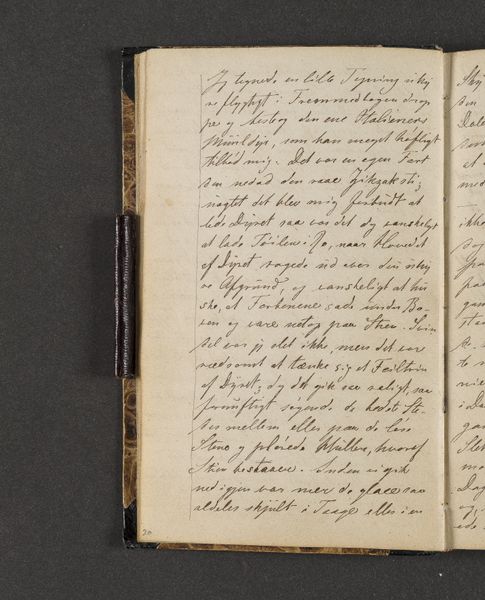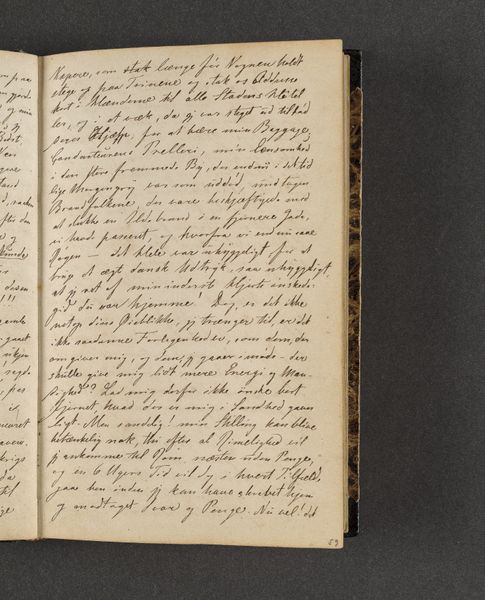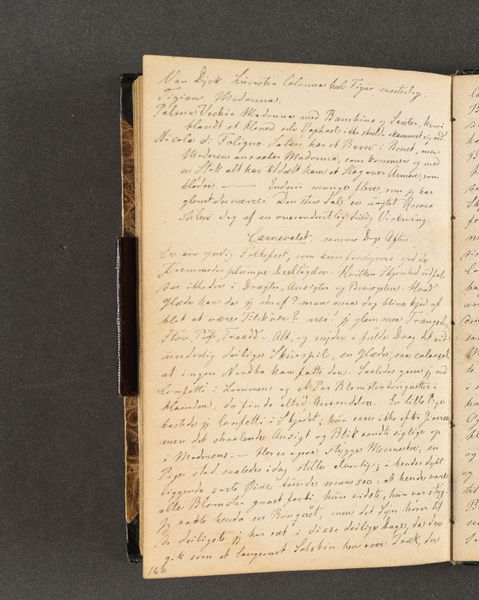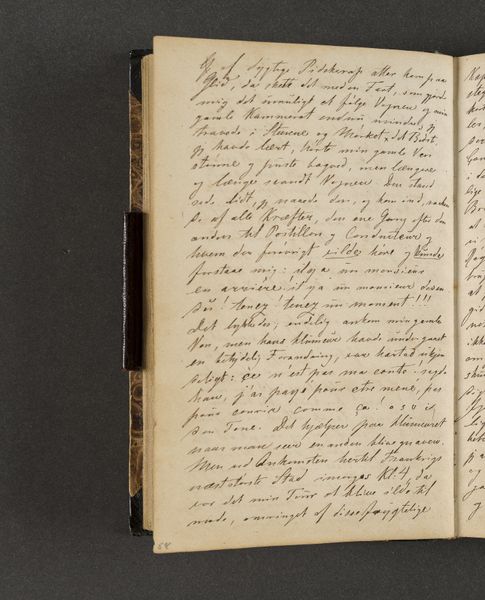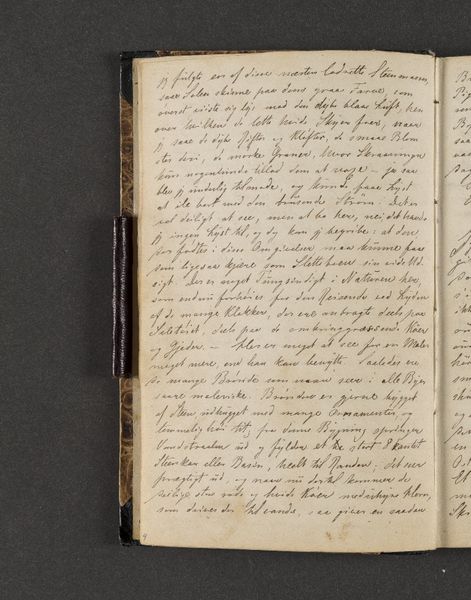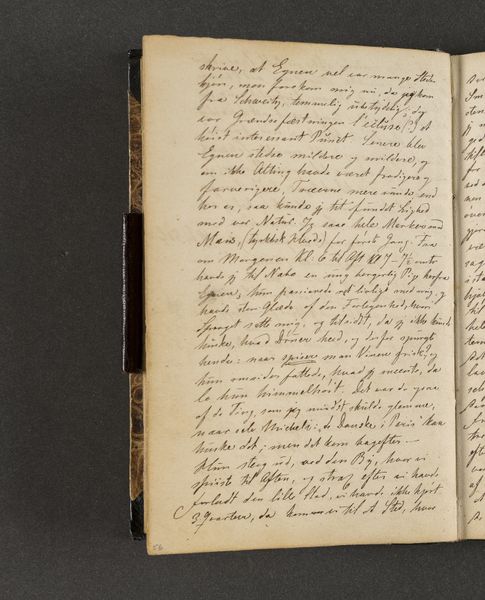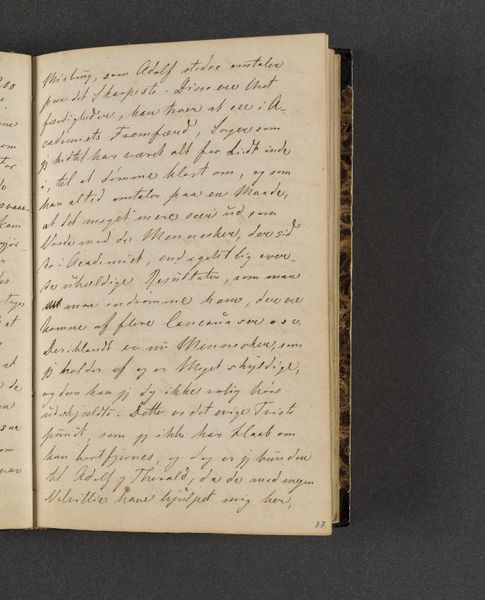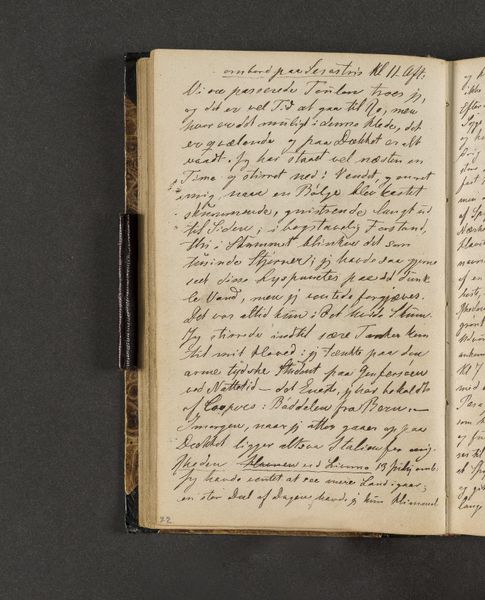
drawing, paper
#
drawing
#
aged paper
#
paper non-digital material
#
paperlike
#
sketch book
#
personal journal design
#
paper texture
#
paper
#
personal sketchbook
#
romanticism
#
folded paper
#
paper medium
#
design on paper
Dimensions: 161 mm (height) x 103 mm (width) x 11 mm (depth) (monteringsmaal)
Curator: This is "Rejsedagbog," or "Travel Journal," created around 1845 by Johan Thomas Lundbye. It's held at the Statens Museum for Kunst, and it's primarily a drawing rendered on paper. Editor: My initial reaction? There’s an intimacy to it. The aged paper itself tells a story, the tight script like whispered secrets. It feels very personal, like intruding on someone's private thoughts. Curator: I see what you mean. The material itself is so key. Consider the physical labor involved in making the paper, preparing the ink, the sheer act of writing at length. Lundbye’s commitment to the journey isn’t just conceptual; it's deeply embedded in the physical process. Think also of the journal as a commodity. Travel became increasingly accessible in the 19th century, partially facilitated by industrial developments like train transport. Editor: Precisely. We can view the journal as a product of its time. How does Lundbye choose to document his experiences, and what’s absent? Was this travel accessible to people of all backgrounds? The question of access immediately surfaces, along with themes around the colonial gaze—who travels, who records, and whose stories get told? We must ask what ideological and political context frames it. Curator: Indeed. The "paper medium" speaks to accessibility in the art world then and even today. He makes visible his own journey as a working artist negotiating his relationship to this industrialized era, thus pushing conventional practices using ordinary materials, as paper becomes available. Editor: But look closer—the deliberate, careful strokes. Even this practical everyday medium takes on this artistic value and shows an act of devotion. I find myself wondering, how much of his reality, of anyone’s reality in his social strata is absent here? Is it the travel of privilege, obscured? Curator: Well, consider the implications and applications of material reality versus the implied conditions which brought the journal into being. How does his "personal journal design" reflect a modern shift in art production? It brings awareness of accessibility through available and inexpensive means. Editor: True, the intimate nature draws you into this time and place, even today, giving the past voice even if filtered through a lens of power. I still can’t help but wonder about what isn’t recorded. Curator: A thought to sit with. Perhaps by looking at the bare materials, we can, to a small extent, see some reflection. Editor: An exercise in unearthing what’s not said, then? I think you may be right.
Comments
No comments
Be the first to comment and join the conversation on the ultimate creative platform.

